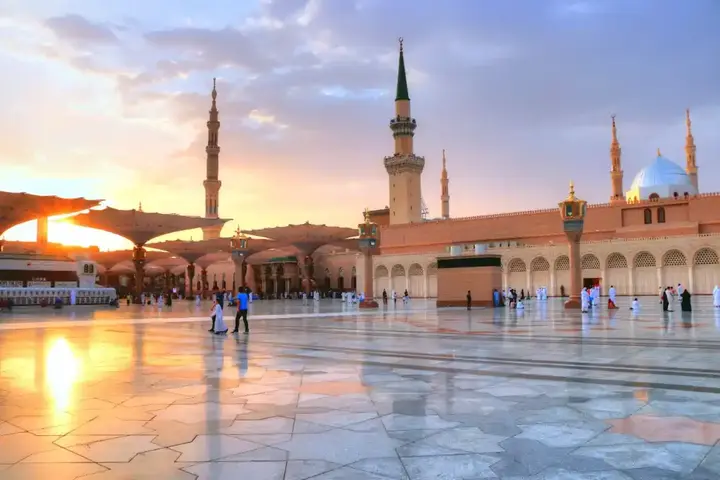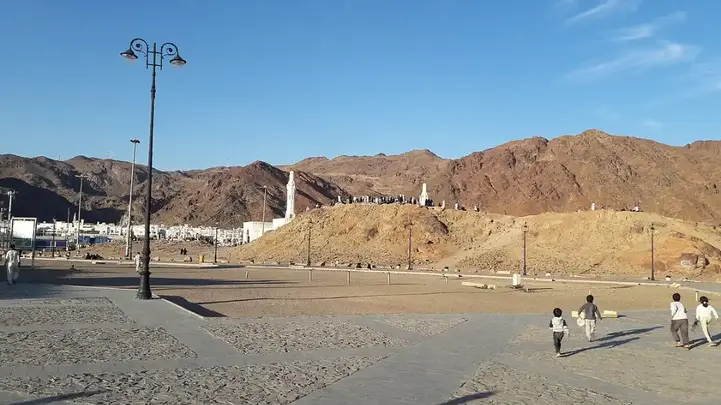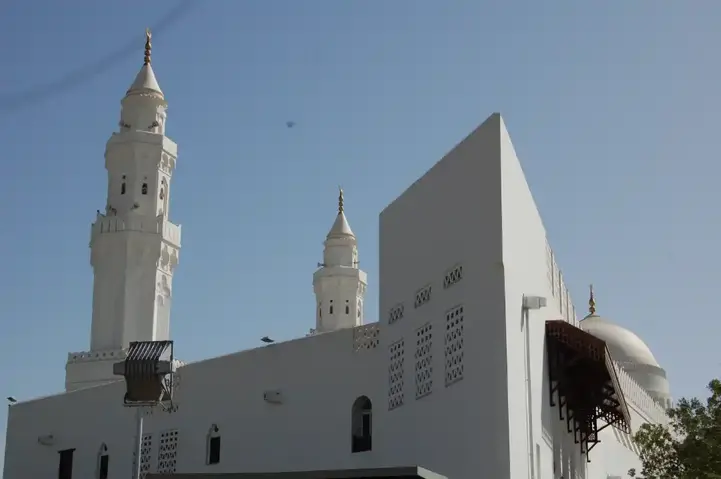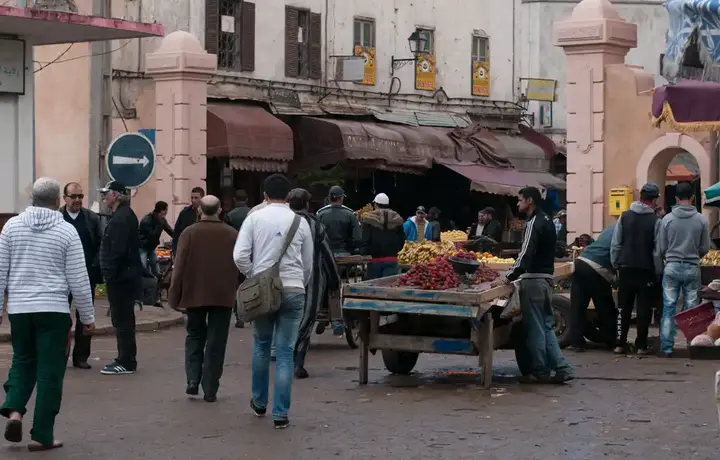Medina: A Spiritual and Historical Guide for Visitors

Medina is one of the most important spiritual and historical destinations for Muslims around the world. Millions of visitors come each year to get closer to the spirituality of the place and to reflect on the rich history of Islam that dates back more than 1,400 years. Medina is known as the place where the Prophet Muhammad, peace be upon him, embraced and paved the way for the establishment of the first Islamic community after the migration from Mecca. While mosques and holy sites remain the beating heart of the city, they also offer tourists the opportunity to explore its rich cultural and historical aspects.
Show key points
- Medina is a deeply spiritual and historical city that attracts millions of Muslim visitors annually due to its significant role in early Islamic history.
- The Prophet's Mosque, housing the tomb of Prophet Muhammad, is the heart of Medina and a central religious site for prayer, reflection, and unity.
- Al-Baqi' Cemetery serves as a sacred resting place for many of the Prophet’s companions and provides a solemn space for remembrance and contemplation.
- ADVERTISEMENT
- Quba Mosque, the first mosque in Islam, embodies spiritual simplicity and offers an opportunity for worshippers to perform a prayer believed to carry the reward of Umrah.
- Mount Uhud stands as a vital historical site where the famous battle between the Muslims and Quraysh occurred, offering lessons in sacrifice and resilience.
- The Qiblatain Mosque marks a major spiritual shift in Islamic history, as it is where the direction of prayer changed from Jerusalem to Mecca.
- Beyond religious landmarks, Medina also offers cultural richness through sites like the Dar Al Madina Museum and traditional markets where visitors can explore local history and crafts.
In this article, we will take you on a comprehensive tour to explore the most important spiritual and historical landmarks in Medina, with practical tips for visitors and travel lovers.
Recommend
The Prophet's Mosque: The Heart of Medina

The Prophet's Mosque is the city's most prominent landmark and one of the holiest places in Islam. The mosque was first built in 622 AD by order of the Prophet Muhammad (peace and blessings of Allaah be upon him) after his arrival in Medina. The mosque is home to the tomb of the Prophet Muhammad, a place where Muslims from around the world flock to pray and meditate.
The Prophet's Mosque is a symbol of spiritual unity, and visiting the Prophet's tomb and peace is part of the visitor's experience. Visitors can also explore the Rawdah Al Sharifa, which is part of the mosque and is said to be a "Rawda of Paradise".
Tips for visiting:
• It is preferable to go at dawn and evening times to avoid crowds.
• Wearing modest clothing out of respect for the sanctity of the place.
• It is advisable to check the prayer times in advance to ensure that the visit is well scheduled.
Al-Baqi': Cemetery of the Companions

The Baqi cemetery is one of the most important historical sites in Medina, where many companions and members of the Prophet's household are buried. Located near the Prophet's Mosque, the cemetery is a holy place for Muslims who flock to pray and mourn the dead. Al-Baqi' is a witness to the early history of Islam and gives visitors an opportunity to reflect on the lives of the Companions and the events they went through.
Tips for visiting:
• It is recommended to visit Al-Baqi' after Fajr prayers, where visitors are allowed entry.
• Respect local laws and avoid filming inside the cemetery.
Quba Mosque: The first mosque in Islam

Quba Mosque is considered the first mosque built in Islam. It was founded by the Prophet Muhammad (peace and blessings of Allaah be upon him) when he arrived in Medina. Representing simplicity and deep spirituality, this mosque is a place of worship and contemplation. Those who visit the Quba Mosque can feel peace and spiritual comfort throughout the place.
Tips for visiting:
• It is preferable to go early in the day to avoid crowds.
• You can pray two rak'ahs to collect the reward of Umrah, according to the hadiths of the Prophet.
Mount Uhud: The Historic Battlefield

Mount Uhud is one of the most prominent historical monuments in Medina and is considered an important place for visitors who want to explore a different side of Islamic history. This mountain witnessed the famous battle of Uhud between the Muslims and Quraysh, which had a major role in shaping the course of events in that period.
When you visit Mount Uhud, you can see the effects of the battle and reflect on the lessons learned. You can also visit the graves of martyrs martyred in this battle, including the tomb of Hamza ibn Abd al-Muttalib, the uncle of the Prophet Muhammad.
Tips for visiting:
• Avoid visiting on hot afternoons, especially in summer.
• Wear comfortable shoes for easy movement in the mountainous area.
Bi-Qibla Mosque: A Unique Experience for Visitors

One of the distinctive religious landmarks in Medina, the Qibla Mosque is the place where Muslims first prayed towards the new qibla in Mecca after the qibla was initially towards Jerusalem. Highly symbolic, this mosque is a popular destination for visitors who want to explore the depth of the spiritual transformations experienced by Muslims during the time of the Prophet.
Tips for visiting:
• The mosque is usually quiet, making it a suitable place for prayer and meditation.
• It is advisable to visit the mosque with a local guide to benefit from a detailed explanation of its history.
Dar Al Madina Museum: A Window on Islamic History

For history lovers, Dar Al Madina Museum is one of the best places to explore Medina's history. The museum displays a collection of artifacts and models depicting the city's history and development through the ages. From rare artifacts to models of ancient buildings, the museum offers a rich experience for visitors interested in the history of Islam.
Tips for visiting:
• It is preferable to dedicate enough time to explore all sections of the museum.
• Entry tickets can be purchased in advance to avoid waiting.
Old Market: A Rich Cultural Experience

In addition to spiritual and historical sites, Medina offers a unique cultural experience through its traditional souks. The old market is one of the places where you can explore the daily life of the city and buy traditional souvenirs such as perfumes, incense and fabrics.
Walking around the market gives the visitor the opportunity to interact with the locals and experience the authentic flavor of the city.
Shopping tips:
• Try negotiating with sellers to get the best prices.
• Be sure to buy local products to support the local economy.
Medina is not just a place, but a deep spiritual and historical experience that blends the past and the present. Visiting the city is an unforgettable trip, where visitors can enjoy religious and spiritual aspects, along with exploring the history of early Islam and local culture. From the Prophet's Mosque to the old souks, Medina has a unique blend of spirituality and cultural heritage that attracts Muslims and non-Muslims alike.
If you love to travel and seek a rich spiritual experience, Medina is the perfect destination that offers you more than just a visit, but an experience that spans time and spirit.








